
SpaceX Launches Crew of Private Astronauts to Space Station
SpaceX launched four private astronauts en route to the International Space Station, including the first woman from Saudi
2023-05-22 06:25

Scientists have discovered why we wake up earlier as we get older
Are your grandparents up very early in the morning, without fail? Well, it turns out there are scientific reasons why older people wake up earlier as they get older. It’s been revealed that in later life, the natural process of ageing leads to changes in the times the body approaches sleep. According to HuffPost, our approach towards resting and amount of sleep we require is down to both genetics and our age. Cindy Lustig, who is a professor of psychology at the University of Michigan, said: “Like most of the things that change with age, there’s not just one reason, and they are all interconnected.” Sign up to our free Indy100 weekly newsletter It’s all to do with the brain becoming less responsive as people age to factors such as sunlight, social cues and physical activity which indicate where in the day we are at any given time. “The wiring of the brain is likely not sensing... and responding to the inputs as well as it should because it’s an ageing brain,” Dr. Sairam Parthasarathy, the director of the Center for Sleep and Circadian Sciences at the University of Arizona Health Sciences, also told the publication. “These are all what we call time givers, or they give time to the brain,” he said. In other words, they help the brain sense where it is in the 24-hour circadian cycle. Younger people can more easily connect indicators like eating dinner with the idea of sleeping in the next few hours. However, that’s not as easy for older people to register naturally, especially as their vision tends to suffer in later life. “Interestingly, one of [the reasons] seems to be that the vision changes that come with age reduce the intensity of the degree of light stimulation that our brain receives, which plays an important role in ‘setting’ our circadian clock and keeping it on track,” said Lustig. Have your say in our news democracy. Click the upvote icon at the top of the page to help raise this article through the indy100 rankings.
2023-05-20 22:52
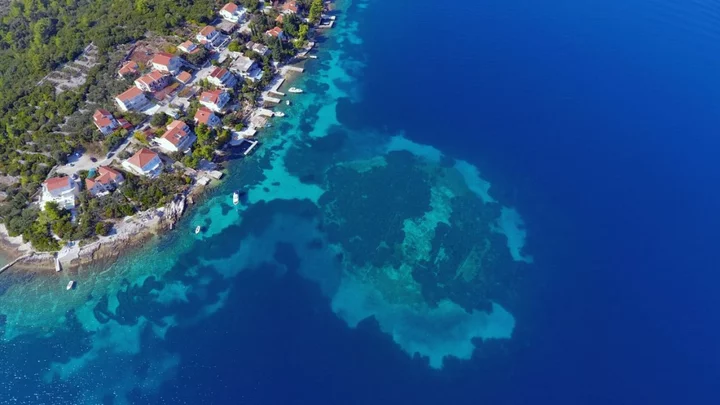
Scientists 'surprised' by 'strange underwater road' discovered in Europe
It’s not quite the lost city of Atlantis, but scientists have just uncovered a slice of history that had been swallowed up by the sea. Experts admitted that even they were surprised when divers unearthed a 7,000-year-old stone road that had lain buried under layers of sea mud. The ancient structure was discovered after archaeologist Igor Borzić, of the University of Zadar, spotted “strange structures” nearly 16 ft (5m) underwater in the Bay of Gradina, off the coast of Croatia. The submerged road once linked the island of Korčula to an artificial, prehistoric settlement that belonged to a maritime culture known as the Hvar. Sign up for our free Indy100 weekly newsletter The university released footage of the incredible finding over the weekend. It showed the passageway which consisted of stacked stones and measured some 12 ft (around 4m) across. Archaeologists believe people walked this road “almost 7,000 years ago”, with radiocarbon dating of wood near the site suggesting the settlement may have been built around 4,900 BC. “In underwater archaeological research of the submerged neolithic site of Soline on the island of Korčula, archaeologists found remains that surprised them,” the University of Zadar said in a Facebook statement. “Namely, beneath the layers of sea mud, they discovered a road that connected the sunken prehistoric settlement of the Hvar culture with the coast of the island of Korčula.” Borzić and his team also discovered another “almost identical” settlement on the other side of Korčula Island. Neolithic artefacts including a stone axe, cream blades and sacrificial fragments, were found at the site which lay at a depth of 4-5m. Understandably, the researchers were delighted and, as they continue to delve into their nation’s past, we wonder what else they’ll unearth. Have your say in our news democracy. Click the upvote icon at the top of the page to help raise this article through the indy100 rankings.
2023-05-20 15:46

Scientists find that AI can read thoughts from monitoring your brain activity
Scientists have revealed they had found a way to combine the technology of brain scans and artificial intelligence to transcribe “the gist” of people’s thoughts. Alex Huth, an assistant professor of neuroscience and computing science at the University of Texas at Austin, and a co-author on the new study published in Nature Neuroscience, said that ‘this is a real leap forward.’ The study was led by Huth and Jerry Tang, a doctoral student in computer science. The main development from this study is that it’s non-invasive. This means that subjects do not require surgical implants. Instead, brain activity is measured using a functional magnetic resonance imaging (fMRI) scanner. Sign up to our free Indy100 weekly newsletter In the study, individuals listened to hours of podcasts in the scanner. Then, given the participant’s consent to have their thoughts decoded, they listened to a new story and the machine-generated corresponding texts from brain activity. It’s not a word-for-word transcript. For example, when an individual heard the phrase ‘I don’t have my driver’s licence yet’, the model decoded the individual’s thoughts to read as ‘she has not even started to learn to drive yet.’ Even when participants thought up their own stories, the machine was able to decode their thoughts still. Tang acknowledged that the advancements made in the study had the potential for negative aftermath. Tang said, ‘we take very seriously the concerns that it could be used for bad purposes and have worked to avoid that.’ They ran tests that highlighted that unless the machine had been trained on an individual’s particular brain activity, it could not decode its thoughts. An individual had to allow for the machine to train their brain activity over a long period of time inside a fMRI scanner for it to work. Researchers also found that it was easy to ‘sabotage’ the machine. Three participants were told to tell a different story in their mind, or count by seven, while listening to one of the podcasts. The study highlights even more development with artificial intelligence, after the popularity of OpenAI’s Chat GPT has sparked debate around the potential of AI. Have your say in our news democracy. Click the upvote icon at the top of the page to help raise this article through the indy100 rankings.
2023-05-20 00:27
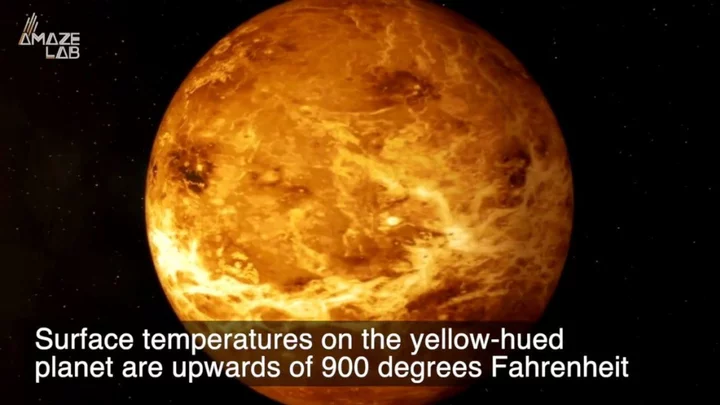
Nasa discover new planet that is entirely covered with volcanoes
Nasa scientists have found a planet they believe is covered by active volcanoes. In a study published in the journal Nature, scientists said they found the planet, which is the size of Earth about 90 light-years from Earth in the Crater constellation. They called it LP 791-18 d and one part is constantly scorched by sunlight, while the other is always in darkness. “The day side would probably be too hot for liquid water to exist on the surface. But the amount of volcanic activity we suspect occurs all over the planet could sustain an atmosphere, which may allow water to condense on the night side,” Björn Benneke, one of the astronomers who studied the planet, told NASA’s Jet Propulsion Laboratory. Sign up to our free Indy100 weekly newsletter The LP 791-18 system contains at least two other planets, called LP 791-18 b and c. The latter is two-and-a-half times larger than Earth and more than seven times its mass. It also affects the orbit of LP 791-18 d, making it travel along an elliptical path around the system’s sun. That path means LP 791-18 d is deformed every time it completes an orbit. “These deformations can create enough internal friction to substantially heat the planet’s interior and produce volcanic activity at its surface,” according to NASA. “A big question in astrobiology, the field that broadly studies the origins of life on Earth and beyond, is if tectonic or volcanic activity is necessary for life,” study co-author Jessie Christiansen said. “In addition to potentially providing an atmosphere, these processes could churn up materials that would otherwise sink down and get trapped in the crust, including those we think are important for life, like carbon.” Have your say in our news democracy. Click the upvote icon at the top of the page to help raise this article through the indy100 rankings.
2023-05-19 19:15

Scientists warn that New York City is starting to sink
When most people picture New York City, it’s likely that its many skyscrapers are one of the first things that come to mind, but now, scientists are concerned that the city is sinking under their weight. It comes after the findings of a new study observed subsidence of the footprint after the geology beneath the city was modelled and compared to satellite data. The study was conducted by geologist Tom Parsons from the United States Geological Survey and colleagues from The University of Rhode Island, who found that, under the weight of its multiple skyscrapers, NYC is sinking by one to two millimetres per year. Subsistence can occur due to shifting soft sediments and the sheer weight of the load on the ground pushing it down. The study calculated that there are over 1 million buildings in NYC with a cumulative mass of approximately 764,000,000,000 kilograms. Sign up to our free Indy100 weekly newsletter While a few millimetres of subsidence per year might sound like nothing, some parts of the city are subsiding faster – with calculations putting a sample site in lower Manhattan at 294 millimetres. To calculate the rates of subsidence, experts compared their modelling with satellite data that measured the land surface height. The scientists warn that thought must be given to low-lying cities such as NYC, which is home to 8 million people, particularly given rising sea levels and increasing flood risks. Parsons explained: “The point of the paper is to raise awareness that every additional high-rise building constructed at coastal, river, or lakefront settings could contribute to future flood risk.” Have your say in our news democracy. Click the upvote icon at the top of the page to help raise this article through the indy100 rankings.
2023-05-18 16:59
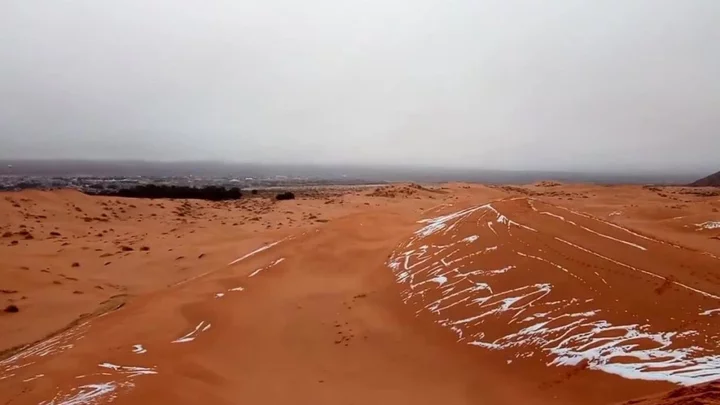
Flooding the Sahara desert proposed as radical climate change solution
It might sound more like the kind of idle daydream billionaires like Elon Musk would have, but could flooding the Sahara actually be the best way of tackling climate change in the future? The idea of creating a new “sea” in Africa is being discussed, and it’s not the first time that the notion of a great oasis in the Sahara has been discussed among the scientific community. As the ongoing climate crisis continues to worsen, the notion of flooding vast areas of the desert is being returned to once again [via IFL Science]. A new “sea” was first proposed following the study of the Messinian salinity crisis – which saw a dried-out area of the Mediterranean rejuvenated by the Zanclean flood, reconnecting the Mediterranean Sea to the Atlantic Ocean around 5.33 million years ago. Sign up to our free Indy100 weekly newsletter Given how the Mediterranean was transformed by the flood, the idea of flooding the Sahara to achieve similar results has been thrown around in the scientific community as far back as 1877, the Scottish engineer Donald McKenzie suggested flooding the El Djouf basin in Western Africa. The idea is now returning to popularity as the world looks for solutions to the climate crisis. One proposal centres on the Middle East’s Dead Sea and flooding the area using water from the Red Sea to the Dead Sea Depression. A vast sea in Africa could represent a hugely innovative step towards tackling climate change and fostering a new hub of life – but even the people suggesting work such a project acknowledge just how expensive and dangerous it is. Even Y Combinator is a US startup accelerator who has described “desert flooding” as “risky, unproven, even unlikely to work”. Only time will tell whether the notion of a new sea in the Sahara coud ever work, or whether it’ll remain the stuff of dreams. Have your say in our news democracy. Click the upvote icon at the top of the page to help raise this article through the indy100 rankings.
2023-05-16 14:19

Japan AI Stocks Surge as SoftBank Joins ChatGPT Clone Race
SoftBank Group Corp.’s mobile unit has declared it’s joining a global race to build a version of ChatGPT,
2023-05-11 10:20
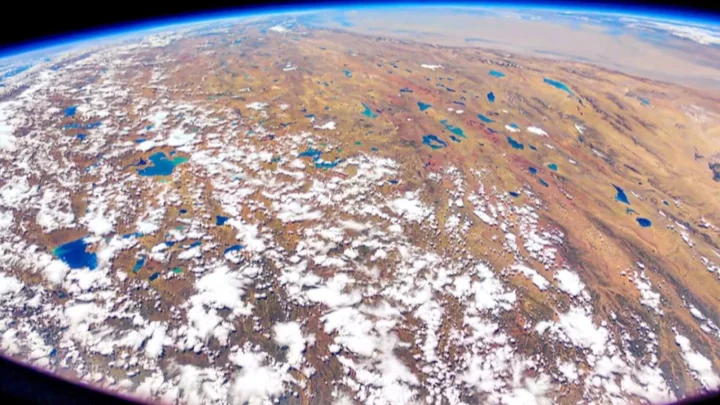
Chinese spacecraft returns to Earth after 276 day mystery mission
Space is full of mysteries which we will never likely solve but, generally, we at least know a thing or two about craft we send out into the cosmos. Not so, when it comes to one probe which has just touched back down on Earth after 276 days in orbit. The experimental spacecraft was launched by China’s space agency, ostensibly to test the nation’s reusable space technologies. According to state media agency Xinhua News, the mission’s aim was to help with the development of “more convenient and affordable round-trip methods for the peaceful use of space in the future”. Sign up for our free Indy100 weekly newsletter That all sounds pretty similar to what SpaceX and NASA are up to, except that the Chinese spacecraft and its journey have been shrouded in secrecy. No information has been released on the altitude it reached or the systems it tested. We don’t even know where it went or, indeed, what kind of spacecraft it was – not a single image has been released to the public. Commentators on Chinese social media have speculated that Beijing has been developing a spacecraft like the UAir Force's X-37B, an autonomous spaceplane that can remain in orbit for years. However, no one knows how well this is going nor, indeed, if it’s going at all. All we do know about China’s latest unidentified flying object is that it was launched from the Jiquan Satellite Launch Center in the Gobi Desert on August 5, 2022 and returned to the same site on 8 May, 2023. It follows an earlier mission, carried out in July last year, which saw a Chinese spacecraft fly to the edge of the Earth’s atmosphere and back on the same day. The country’s main space contractor, China Aerospace Science and Technology Corp (CASC), hailed the success of the craft’s brief celestial jaunt at the time. It gushed: "The development of reusable space transportation technology is an important symbol of China's transition from a 'big' space-faring nation to a 'powerful' space-faring one.” Have your say in our news democracy. Click the upvote icon at the top of the page to help raise this article through the indy100 rankings.
2023-05-10 20:52

Police search for the names of 22 women murdered
Detectives in three European countries want help to identify victims whose names remain a mystery.
2023-05-10 12:28

Virgin Galactic Earnings Miss as It Plans New Flights
Virgin Galactic Holdings Inc. broadly missed estimates for the first quarter as the space-tourism company plans commercial flights
2023-05-10 05:52
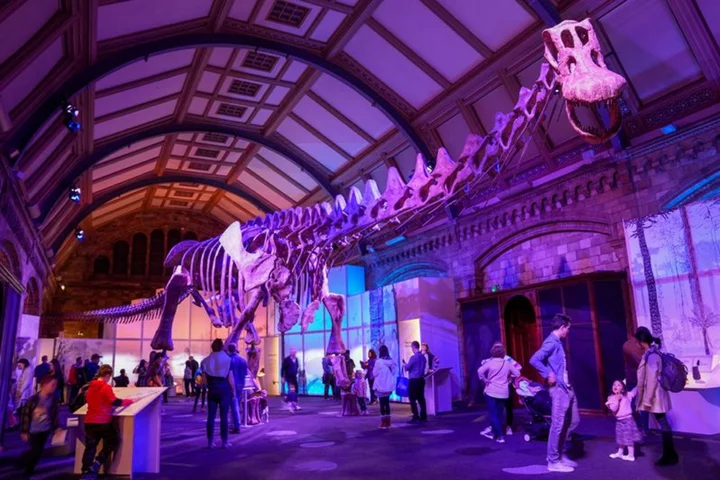
How to build a giant? Sauropod dinosaurs did it 36 different ways
By Will Dunham WASHINGTON Sauropods, those familiar plant-eating dinosaurs with long necks, long tails and four pillar-like legs,
2023-05-09 00:54
